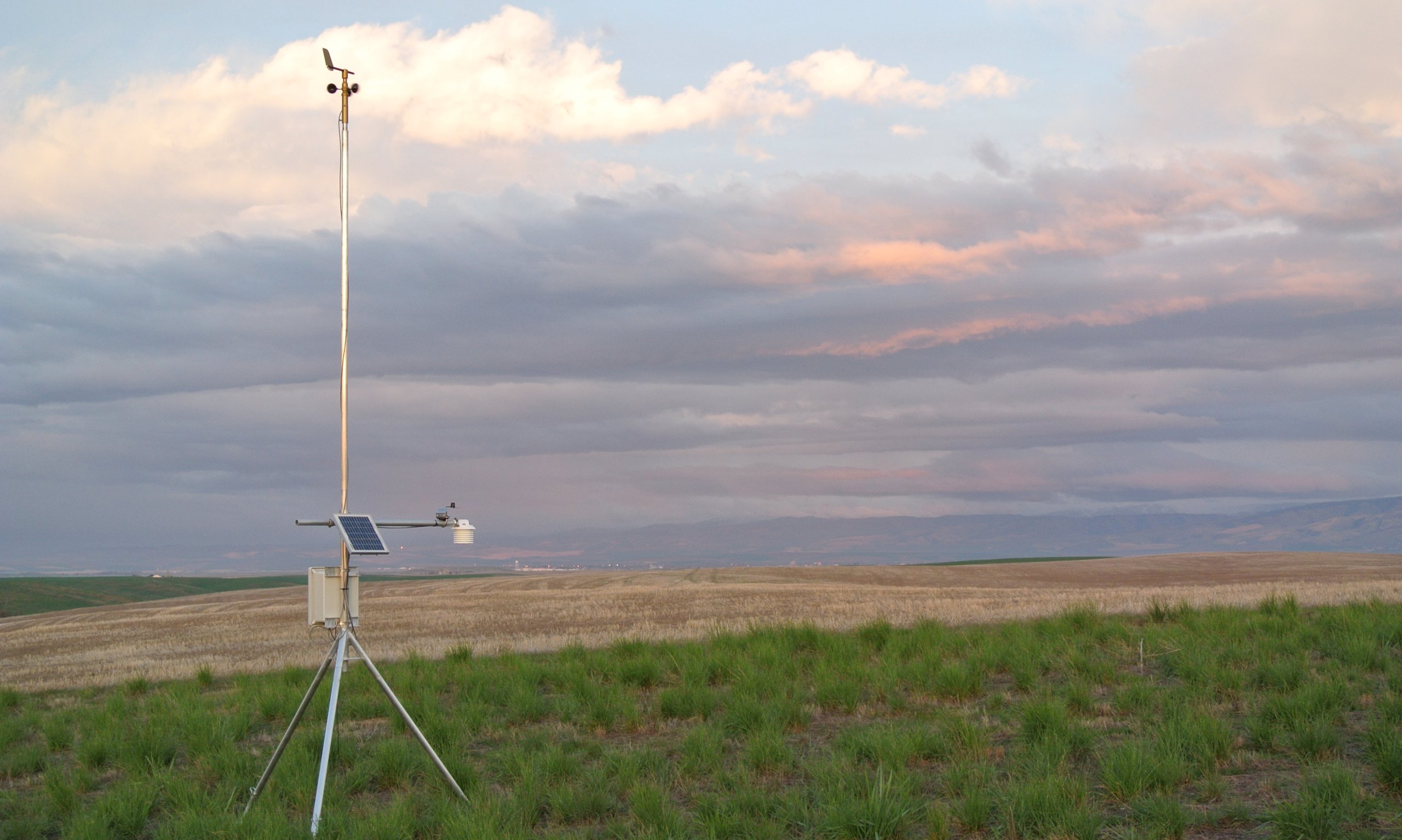This article is part of a series entitled “Introduction to Industrial Weather Stations” (IIWS). The other parts are:
Part 1 – Definitions
Part 2 – Weather Station Construction
Part 3 – Who Makes Industrial Weather Stations
Part 4 – Installation and Accuracy
Conclusion – Finally…
—
I generally divide weather stations into two types of construction, modular and integrated.
Modular Weather Stations
Whether mounted on a tripod, pole, or tower, a modular or component weather station can look like a strange skeleton with various boxes, panels, and curious contraptions hanging off in odd directions. Each device is dedicated to one or two functions or measurements. These disparate components are tied together in a central box that contains a data collection or processing device. This can be a data logger, SCADA device, Data Communication System, or any number of other initialisms. We call our device a “Weather Station Control Module” because it integrates the solar charge controller, data logger, radio transceiver, and sensor interfaces on a single circuit board.
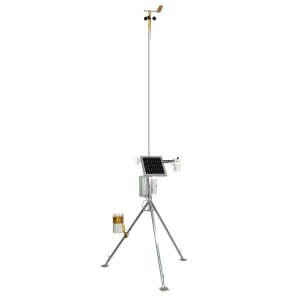
Dyacon Weather Station
Wind sensors usually occupy the high-point of the structure, elevated as far as possible from surface turbulence. The meteorological standard is for wind to be measured at 10 m. Since most of us are not meteorologists, we do the best we can to mount the wind sensor as high as practicable or at a height which meets our monitoring needs.
Temperature and humidity are typically measured at about 2 m above the ground.
Rain gauges are often mounted low in order to take advantage of lower wind speeds near the ground and increased mounting stability. This also makes them easy to service, which must be done several times a year. (Rain gauges will catch everything that falls into them.)
Other instruments may occupy different elevations, driven by available tower height, snow depth, or other conditions.
Any one individual sensor is generally not dependent on others. Sensors can be repaired or replaced without disturbing ongoing monitoring from other inputs.
Cost may be higher for modular weather stations, but not necessarily. The system price will greatly depend on the incremental cost of each component.
The ability to add and remove sensors can allow for greater customization, optimizing for cost or function as the need requires.
Modular weather stations are typically not suitable for portable applications that might be carried from place to place, but they may be used for mobile (vehicle mounted) or seasonal deployments.
Integrated Sensor Suites
The trend over recent years has been to integrate as many sensors into a single physical package as possible. This can result in a system that is simple to mount and very portable.
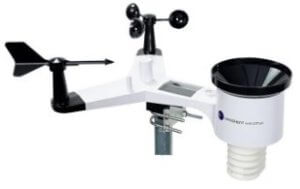
Ambient Weather 2902
While convenient, the drawback to integrated sensor suites is that EVERYTHING is combined into a single unit. This prevents the ability to position sensors at preferred heights. In cases of one sensor failure, the whole system must be taken down for service. (Image: Ambient Weather)
These suites can also be quite expensive and require additional cost for the host device (data logger or PC software) and power system.
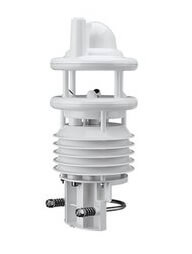
Lufft WS700
Temperature, pressure, precipitation, solar, wind, and other sensors may be optimized to fit within the integrated package rather than for accuracy. Impact rain gauges or small rain gauge orifices are an example of integration compromises. (Small collection orifice decreases the sample size.) One sensor suite I know of includes a temperature sensor that is significantly influenced by solar heating. The developers used the integrated solar sensor to numerically compensate for the temperature error. This may be reasonable with a sufficiently complex model and adequate inputs from other direct measurements.
Hybrid Weather Stations
Several consumer and pro-sumer weather stations, such as Davis Instruments and RainWise, use a hybrid construction. Usually the wind sensor can be mounted separately from the rest of the system.
Some modular sensors may measure multiple parameters. Combination wind speed and wind direction are commonly combined in one device.
Humidity measurement must include temperature, so this will typically be provided by the same device. The Dyacon TPH-1 combines three common parameters in one, temperature, barometric pressure, and relative humidity. This saves cost, power, and installation complexity.
In the end, whether you select a sensor suite or modular construction, it must be evaluated for suitability for the application, installation limitations, serviceability, support, and cost. As I stated at the beginning of the first installment of this series, a weather station is a tool and should be selected for the job to be done.
Now that we have some basics covered, I’ll give you some sources for industrial weather stations in part three.
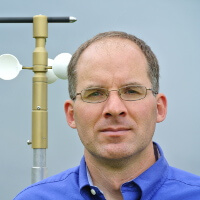 – Eugene
– Eugene
